Two of the most common and disabling symptoms we hear about from people with Parkinson’s are fatigue and sleepiness. What we’ve learned, however, is that some people call it fatigue when they really mean sleepiness. Or, they say they’re tired all of the time when what they’re really experiencing is fatigue.
Do the words people choose really matter? Yes, because treatments for sleepiness are different than ones for fatigue. And the more you understand each situation, the better chance you have of getting the care you need.
Definitions
Before we dive into some of the research, let’s first define what we’re talking about.
Fatigue: “an overwhelming sense of tiredness, weakness, lack of energy, and exhaustion (subjective fatigue); or as a mismatch between expended effort and actual performance; or as a reduction in the capacity to either initiate or sustain voluntary activities (objective fatigue).” (The Pathophysiology of Fatigue in Parkinson’s Disease and its Pragmatic Management)
Parkinson’s Fatigue: “a sense of exhaustion unexplained by drug effects, other medical, or psychiatric disorders, present for a defined period, and associated with other fatigue-related symptoms, such as reduced motivation and nonrestorative rest, or constraints on activities.” (Fatigue in Parkinson’s disease: report from a multidisciplinary symposium)
The International Parkinson’s and Movement Disorder Society breaks fatigue down even further into four types of fatigue:
Peripheral fatigue: loss of muscle strength caused by repeated contractions. This is sometimes called muscle fatigue or physical exercise fatigue.
Central fatigue: having the experience of an abnormal degree of tiredness, weakness or exhaustion that involves both mental and physical domains but in the absence of motor or physical impairment related to the central nervous system. (In other words, a constant tremor is not what’s making you feel fatigued.)
Mental fatigue: cognitive effects one experiences during and after performing attention-requiring exercises or sustained intellectual activity.
Physical fatigue: sustained physical activity that turns into physical exhaustion and lack of energy to perform physical tasks even though you have the desire and motivation to perform them.
Fatigue can affect one’s quality of life in many ways. It can…
- Prevent you from being physically active
- Get worse over time, as Parkinson’s progresses
- Make depression worse (it doesn’t cause it, but it can add a level of intensity to it)
- Make it difficult to focus and concentrate on important tasks
- Make everything feel like an intense effort
- Get in the way of connecting with others
- Undermine countless daily activities
- Make it much more difficult and exhausting to cope with Parkinson’s and non-Parkinson’s related challenges
With that term explained, we can move on to sleepiness, or for our purposes, excessive daytime sleepiness.
Excessive Daytime Sleepiness (EDS): “an inability to maintain wakefulness and alertness during the major waking episodes of the day that results in periods of irrepressible need for sleep or unintended lapses into drowsiness or sleep.” (Excessive Daytime Sleepiness in Parkinson’s Disease: Clinical Implications and Management)
Excessive Daytime Sleepiness can be debilitating and sometimes even dangerous. Those who experience EDS may:
- Fall asleep during the day, often multiple times and in random places
- Experience it when they are driving, posing a risk to others
- Miss out on opportunities to improve their quality of life by exercising or connecting with others because they are too sleepy to leave the house
- Choose to give in to their excessive sleepiness during the day by taking frequent naps, thereby impacting their ability to get a good night’s sleep each evening
The Critical Difference Between Sleepiness and Fatigue
Fatigue is a physical or psychological feeling where people feel weary and exhausted and lacking energy. EDS is about needing and having the urge to sleep.
Fatigue is something that people can experience along with EDS; however, people who experience fatigue on its own—the feeling of being tired and out of energy— do not also necessarily fall asleep when sedentary, as people who experience EDS often do.
It is estimated that EDS affects up to 50% to 75% of people living with Parkinson’s and fatigue is estimated to affect 40% to 60%. Fatigue, however, is more likely to go undiagnosed.
Because the terms fatigue and sleepiness are so heavily linked, and sometimes used interchangeably, research has concluded that fatigue and EDS should be assessed separately in people with Parkinson’s so that we can improve our understanding of their overlapping physiology.
With that knowledge, researchers from the University Hospital of Zurich, Switzerland designed a study to determine the overlap between fatigue and EDS and then associate them with other motor and non-motor symptoms as well as dopaminergic medication.
In their study of 88 outpatients, the researchers found that 72% experienced fatigue or EDS and just under half experienced both. Some of the key findings of the study include:
- 72% of patients suffered from fatigue, EDS or a combination of both. 59% reported fatigue, 24% on its own and 35% with EDS. 48% reported EDS, 13% on its own and 35% with fatigue.
- Fatigued patients were almost twice as likely to suffer from EDS than non-fatigued patients (60% versus 31%).
- EDS was more common and severe with longer disease duration, but the same pattern was not observed when it came to fatigue.
- Fatigued patients with Parkinson’s disease had more severe motor symptoms than patients without fatigue. They were also more likely to suffer from Parkinson’s-related insomnia than patients without fatigue (77% versus 53%), autonomic disturbances (46% versus 19%) and depression (52% versus 28%).
- Insomnia was more prevalent in patients with EDS than without (79% versus 57%) but the researchers found no differences when it came to the severity of motor symptoms, hallucinations, autonomic disturbances or depression.
- Increased sleep duration (hypersomnia) was associated with fatigue but not EDS. The 17% of patients who reported increased sleep duration were more likely to be severely affected by motor symptoms than patients with average sleep duration, but did not show an increase in other symptoms.
- Most of the patients (50%) were receiving a combination of levodopa and a dopamine agonist, 38% were just receiving levodopa and 10% were just receiving a dopamine agonist. No patients were on rasagiline or selegiline.
- Dopaminergic treatment exerted a stronger influence on EDS than on fatigue. When dopamine agonists were combined with levodopa, this made EDS even worse.
Next Steps
Now that you, hopefully, have a clearer picture about your own situation and whether you typically experience fatigue or EDS or both, here are a few actions you can take to try and manage them.
(Note: If you’re still unsure how to distinguish between fatigue and sleepiness, here’s the Parkinson’s Disease Fatigue Scale (PFS-16) and Parkinson’s Disease Sleep Scale (PDSS) for your reference. We are NOT offering these as diagnostic tools; however, they may help you better understand how each symptom is reviewed.)
As with every new intervention you consider, be sure to speak with your doctor and care team about it before you take action on it.
Potentials Ways to Reduce Fatigue
- Exercise. It may seem counterintuitive get moving if you’re feeling fatigued; however, the right kind and the right amount of exercise can significantly reduce fatigue. Experiment. Sometimes just getting out the door for a walk in the fresh air can reduce fatigue.
- Talk to your doctor if you think you may be depressed. It’s possible that an anti-depressant could reduce fatigue.
- Plan your time. Identify when you tend to have the most energy throughout the day and plan to get your most important jobs done then.
- Be realistic, but still do something. If you’re feeling extra exhausted on a certain day, don’t put pressure on yourself to accomplish everything you planned. Do something—because accomplishing something will give you an energy boost— but be realistic about what you’re capable of doing.
- Delegate. It’s not easy. You may have concerns about being a burden to others. Most people will be thrilled to help. Let them.
- Organize and declutter. Opening up space—physically, emotionally, mentally and logistically—can help you reduce stress and as a result reduce feelings of fatigue.
- Connect with others. We know that when you feel wiped out that the last thing you want to do is attend a support group meeting or event, but connecting with others in a positive way has the potential to not only make you feel supported and encouraged and loved, but it may very well give you the exact bump in energy that you need.
Potential Ways to Reduce Excessive Daytime Sleepiness
- Assess the underlying cause (are sleep disorders such as REM Sleep Behavior Disorder affecting nighttime sleep, which impact daytime sleepiness?)
- Improve nocturnal sleep through medications, cognitive behavioral therapy, diet, light therapy and more
- Evaluate all medicines being taken—some have hypersomnia as a side effect—and adjust as needed
- If taking dopaminergic medications, consider dose adjustment
- Watch consumption of alcohol or sleep-inducing foods/ingredients (sometimes people are allergic to or intolerant of certain foods that can impact sleepiness)
- Experiment with caffeine
Share this with Your Doctor
Do you experience sleepiness and/or fatigue but find it challenging to communicate with your doctor about it? Consider printing this out, highlighting the sections you relate to and taking it with you to your next appointment. And, don’t forget to share it with your care partners as well. It might help them understand your behavior and symptoms in a way they haven’t been able to before.
Do You Experience EDS or Frequent and Daily Fatigue?
If you have a story you’d like to share, please post in the comments and let us know what you’ve done to manage your experience.
For Further Learning
Epworth Sleepiness Scale (ESS)
Threshold for Quick Diagnosis of Sleep Issues in PD
Fatigue and Parkinson’s Disease


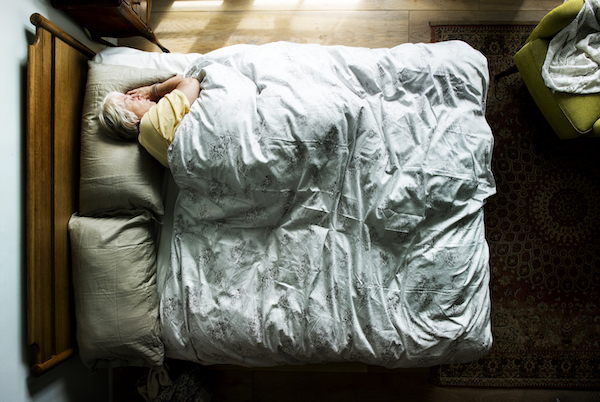




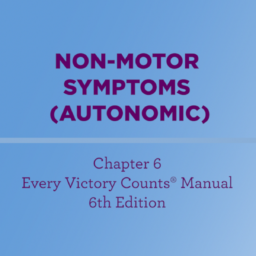
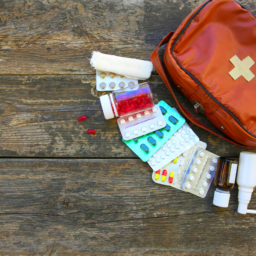




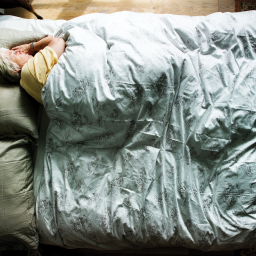

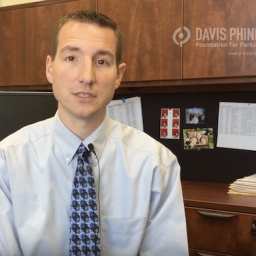
Good content. Can you cover the restless legs syndrome. Some of my patients are having it and I want research on it
Thanks for reading, Trizah. What line of work are you in? We’ve had a few people request this topic lately; so, it’s on the list for us to address.
Statistics like “fatigue is estimated to affect 40% to 60% of people with Parkinson’s” would be more meaningful if we knew how it compares to the frequency and severity in the healthy population of similar age. Most of my older friends experience fatigue. How do I know if mine is PD? Does it matter?
Thank you for reading, Pamela. Being able to identify a “similar age” is a tough one because Parkinson’s affects people of all ages. We recommend working with your doctor or movement disorder specialist to try and isolate as best you can what the fatigue is about. Is it a result of how you react to medication, how you live the rest of your day, your exercise level, comorbid conditions, etc. It’s not an easy symptom or side effect to parse out; however, I do think your doctor might be able to help you start.